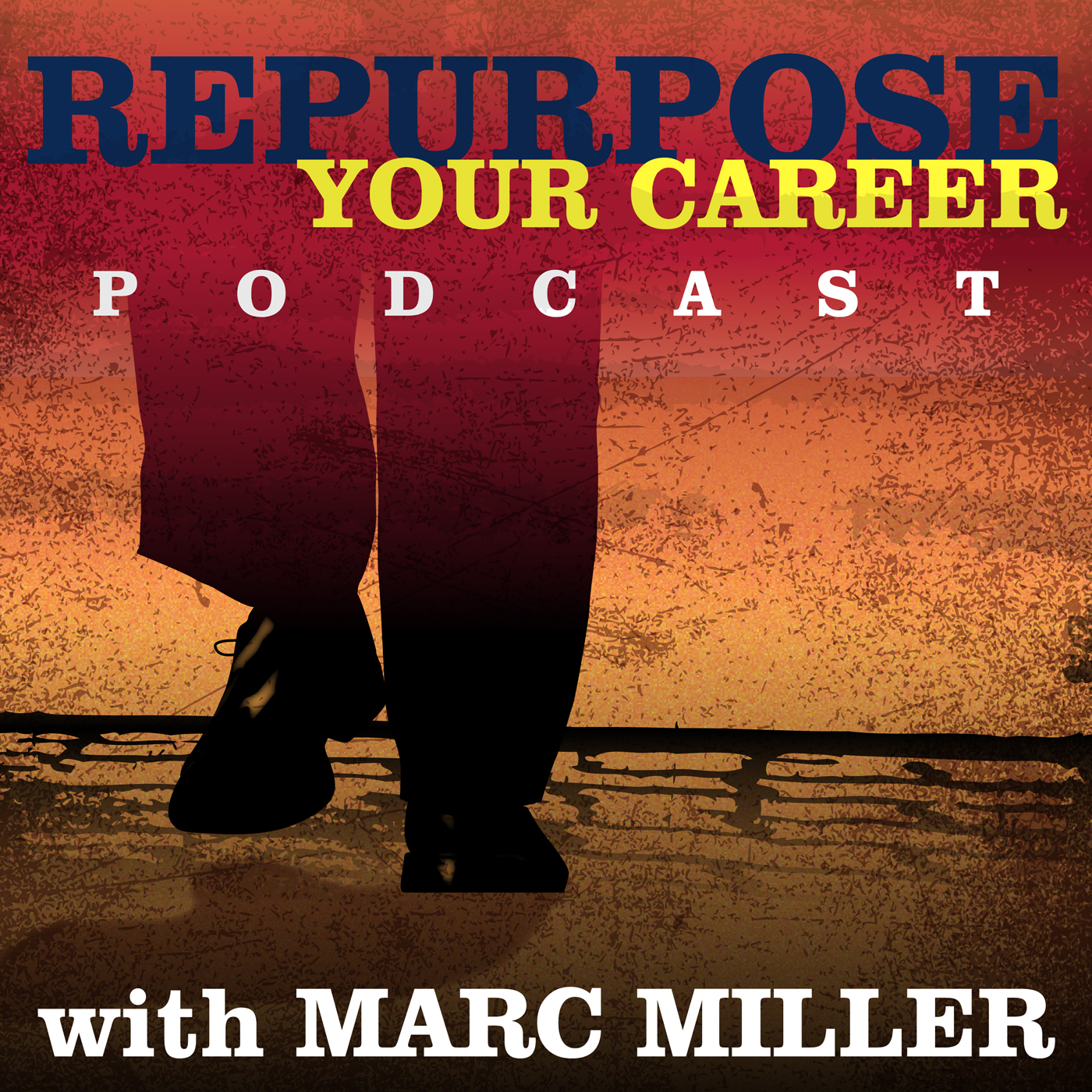Recovering from My 3 Biggest Career Mistakes
 In my last post, I chronicled My 3 Biggest Career Mistakes. I want to discuss how I went about recovering from those mistakes and give you a model to follow. If you have not read that post, please go read it now.
In my last post, I chronicled My 3 Biggest Career Mistakes. I want to discuss how I went about recovering from those mistakes and give you a model to follow. If you have not read that post, please go read it now.
Recovering from Reinvention Failure
I have been in “reinvention mode” for much of the last twenty years. I started in my early 40s when I was seduced by a former manager to move to IBM’s consulting group.
After a near-fatal bicycle accident, I blindly went off to what I thought would be a dream job teaching high school math in an inner-city high school.
After leaving teaching, I decided to try my hand at non-profit fundraising. I went to work for a Jewish Community Center. As I said in my previous post, being a non-Jew as the face of a Jewish organization is…interesting! I told myself that I could make this work, but I could not.
There are three common themes that play out when I analyze how I recovered. (I am a recovering engineer, so I analyze things a lot!)
- Have a Plan B ready. In each case, a Plan B appeared out of the blue. In hindsight, this was a combination of luck and fate.
- If you are going to fail, fail fast. In two of the three situations, I failed within six months. This greatly eased the recovery. When I forced myself to stick it out, the recovery was much more painful.
- Learn from each experience. I am applying things I learned from my failures while building Career Pivot.
Recovering from Consulting Hell
In 1998, I left a comfortable job in IBM to go to work for their consulting group. This was a huge mistake because I worked with a lot of unhappy consultants and my values were compromised (a project designing a point of sale solution for a short-term loan company). I quit the project, and six months later, the consulting position as well.
Plan B
I knew that I could find a position in the division I left within IBM. It took two months, and the consulting group did not push me to find anything quickly.
Fail Fast
I failed quickly. I had the advantage of being in close contact with people in my old organization. If I had stayed another year, well, I probably would not have been so lucky.
Learn from the Experience
In those six months, I learned how large consulting groups mitigate risk in bidding projects. They follow strict methodologies. I also learned a lot about myself. The team I work with is absolutely imperative.
I landed back in a marketing group as the Project Monterrey Evangelist. I knew this would be short-term since I left IBM early in 2000 to go to work for a semiconductor startup that was acquired by Lucent.
Recovering from Teaching High School
After a near-fatal bicycle accident in 2002, I left to teach high school math. I ignored every sign that public school administration was not interested in over 40-year-old guys (we do not do what we are told). They want to hire new college graduates who are compliant and will follow the rules.
I finished my first year of teaching Algebra I and II in June of 2005. I was incredibly successful. No one in the school district noticed. I was later interviewed by a University of Texas professor who was amazed at my students’ test results. I was exhausted, both emotionally and physically. Emotional exhaustion was the biggest factor to get me to leave.
I was successful because of my team where I had recruited multiple mentors during my first year and leaned on them heavily. When I returned in the fall, I was to teach five sections of Algebra II. All of my mentors from my first year were gone. I mistakenly thought I did not need them but I was wrong.
I resigned in December of 2005, at the end of the term, exhausted and depressed.
Plan B
I did not have one. It had been over two years since I left my technology job. I was out of date. I did land a short-term training assignment on a State of Texas project, but that did not last.
Fail Fast
In hindsight, I should have resigned at the end of my first year. I could have more easily returned to high-tech at that point. My recovery would have been easier.
Learn from the Experience
My entrepreneurial juices were energized when I was in this battleship called public education. I mentored my principal as we went through a high school redesign. It was clear to me that I would eventually work for myself to fix real-world problems. I also learned that I stayed too long. I did not have the emotional stamina to work with teenagers who had problems most of us cannot even imagine.
It took nearly ten months before I landed a non-profit position. It was a really painful ten months!
Recovering from Non-Profit Work
In October of 2006, I was hired to develop a corporate fundraising program for the local Jewish Community Center. I was considered for the position because I had deep business relationships within the community, and, though I am a non-Jew, I was a member of their organization (I worked out at the facility because it was close to my house).
During the winter of 2006/2007, I determined that there was no way in the world I could be successful in this role. There were cultural, organizational, and managerial roadblocks that were too numerous to document. Plus, I saw telltale signs of the impending great recession. All of the banks I approached were very friendly but kindly showed me the door. I had a position that would eventually be eliminated.
Plan B
In early spring, I decided that I would leave in October. My plan was to take 3-4 months off to rest. I was approached in the early fall of 2007 with three technology opportunities. Quickly, I had multiple Plan Bs! I took a long vacation and was hired in December of 2007 by a tech startup to develop a training and certification program.
Fail Fast
It only took six months for me to decide to leave. This was the best decision I could have made. Failing fast was so beneficial.
Learn from the Experience
I really need to understand how organizational rules apply to my job. That was not the case in this environment. I assumed that I could get groups within the organization to work with me, to do things differently, to think a little differently—boy, was I wrong! Working inside of a non-profit was not for me.
Recovering Model
In my analysis of all three career mistakes and what it took to recover, I have the following advice:
- Be prepared to pull the plug on the reinvention project. Have a clear timeline and metrics to determine whether you will be successful. If you are going to fail, fail fast. When I started Career Pivot, I had a timeline to gauge how to measure success. I determined the metrics of financial success that I needed in years one, two, and three. I have hit all of these, by the way.
- Have a Plan B in place from day one. In my first couple of years of Career Pivot, I gave soft skills webinars and provided instructional design work for an international construction company. This gave me the option to return to similar work if desired. I just gave that work up in the last six months.
- Should you fail, take the time to chronicle the lessons learned. If you do not, you will likely make the same mistakes again.
This advice follows the methods used by many of today’s technology startups. Take a look at this New Yorker article Fail Fast, Fail Often, Fail Everywhere.
Never Give Up
The real issue is that most baby boomers were raised to never give up. Most of us remember the great quote from the Apollo 13 mission, “Failure is not an option!”
Several people responded to my first post that they hung onto their reinvention until they could no longer make it. They have yet to recover. They stuck to it so long that their connections with their previous career were lost.
The fail-fast strategy is counter to our baby boomer cultural beliefs. The reality is that, if you are going to fail, you need to identify it early and cut your losses. That is hard.
Do you have a fail-fast story? Have you hung on too long? Either way, tell your story below.
Marc MillerLike What Your Read? Get Career Pivot Insights
Do You Need Help With ...

Check out our Help Center where you have access to 14 different content portals.


